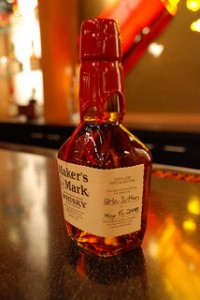Who Owns Red? Maker's Mark and Jose Cuervo Fight It Out
A few months ago we wrote about whether shoemaker-to-the-stars Christian Louboutin ought to have a monopoly over red shoe soles. Last week, in Kentucky, a similar issue arose concerning red wax. The red in question was on the neck of bottles of booze—specifically, Maker’s Mark bourbon and Jose Cuervo’s Riserva de la Familia tequila, which both feature a bottle cap seal made of red, dripping wax (Cuervo has since shifted to a straight-edged red wax seal). Maker’s, which used the dripping wax seal first, sued Cuervo, claiming trademark infringement.
The dispute is interesting because we like to drink bourbon and tequila it highlights two things about brands in the modern economy.
First, trademarks are not limited to words, like Nike or Apple, or symbols, like the swoosh or the apple-with-a-bite-missing. Increasingly, they are baked right into the product (think Louboutin’s red soles) or fall halfway between product and packaging (the dripping red wax that adorns all the tops of bottles of Maker’s Mark). In a global economy with diverse languages, symbolic branding like this can be especially valuable.
Second, the dispute highlights the complex economic relationship between aesthetics and function. In the case of the Louboutin shoes, the court held that Louboutin did not have a lock on red soles because red soles were actually “aesthetically functional”—that is, color is one of the things that gives a piece of apparel a competitive advantage in the marketplace.
The same may be true for liquor, but we think to a much lesser extent. While the look of a bottle of liquor is significant—witness the great diversity of bottle shapes and logos, including vodka in a bottle the shape of a human skull–ultimately taste trumps (we hope).
So as the court in the Makers Mark/Cuervo dispute declared, competitors are not really put at a disadvantage if they have to use black or green wax to seal their bottle caps. Port wine shippers have been using black wax seals for decades, maybe centuries. For high-end shoes, on the other hand, looks are much more central, and the consumer’s desire for a certain color in a shoe much more likely to drive consumption decisions than the color of wax on a liquor bottle. Hence in the fashion context, the potential harm from granting one competitor control over a color is much larger.


Comments